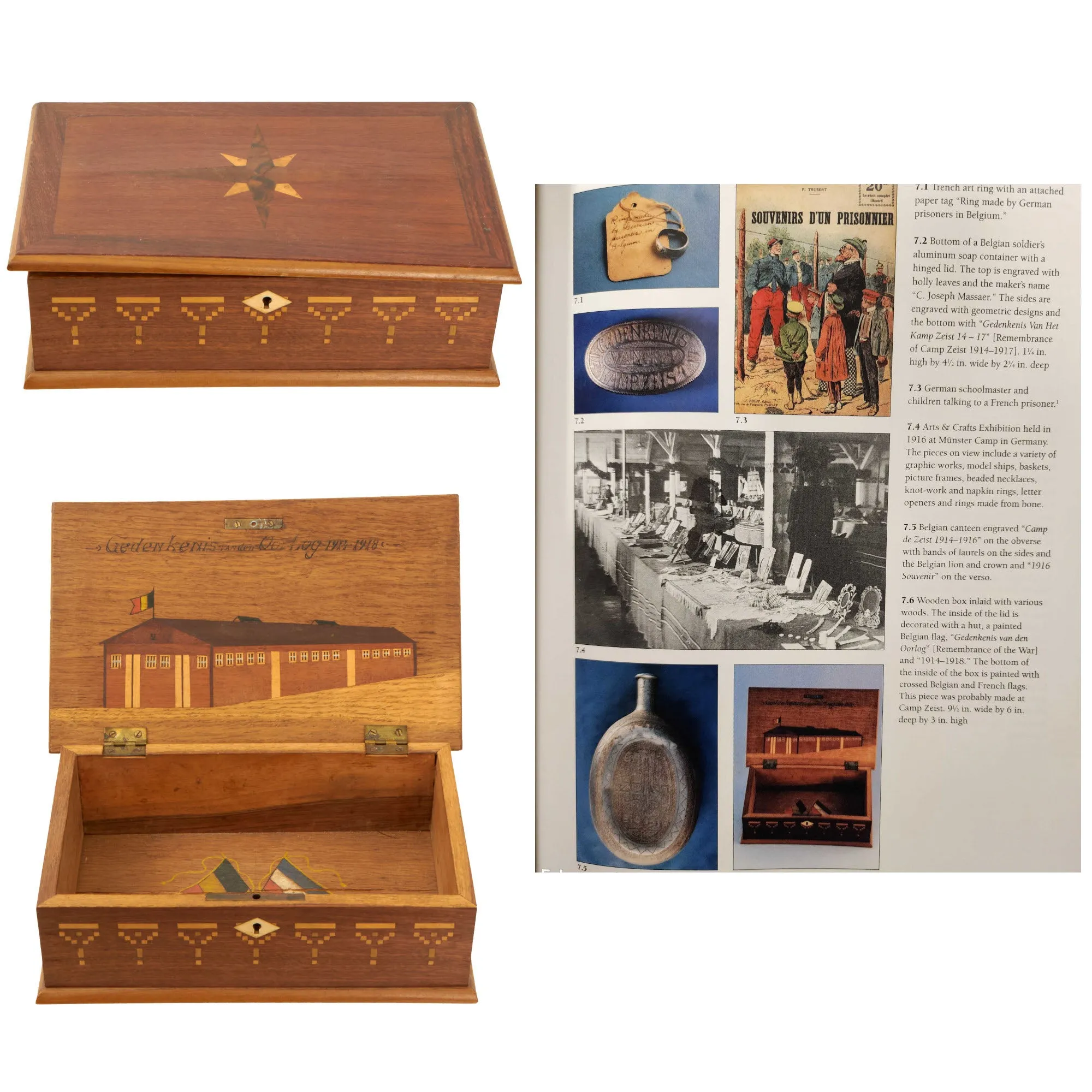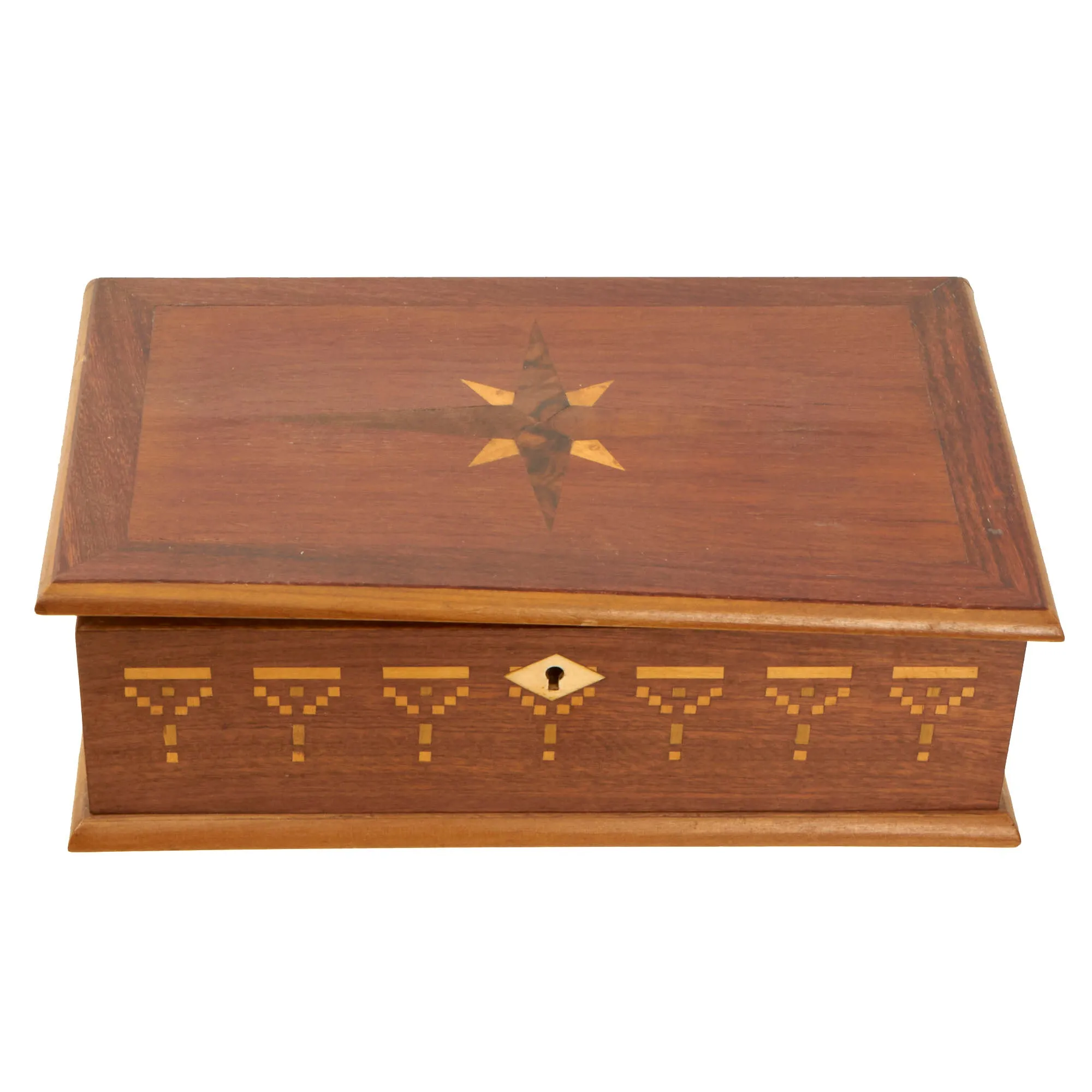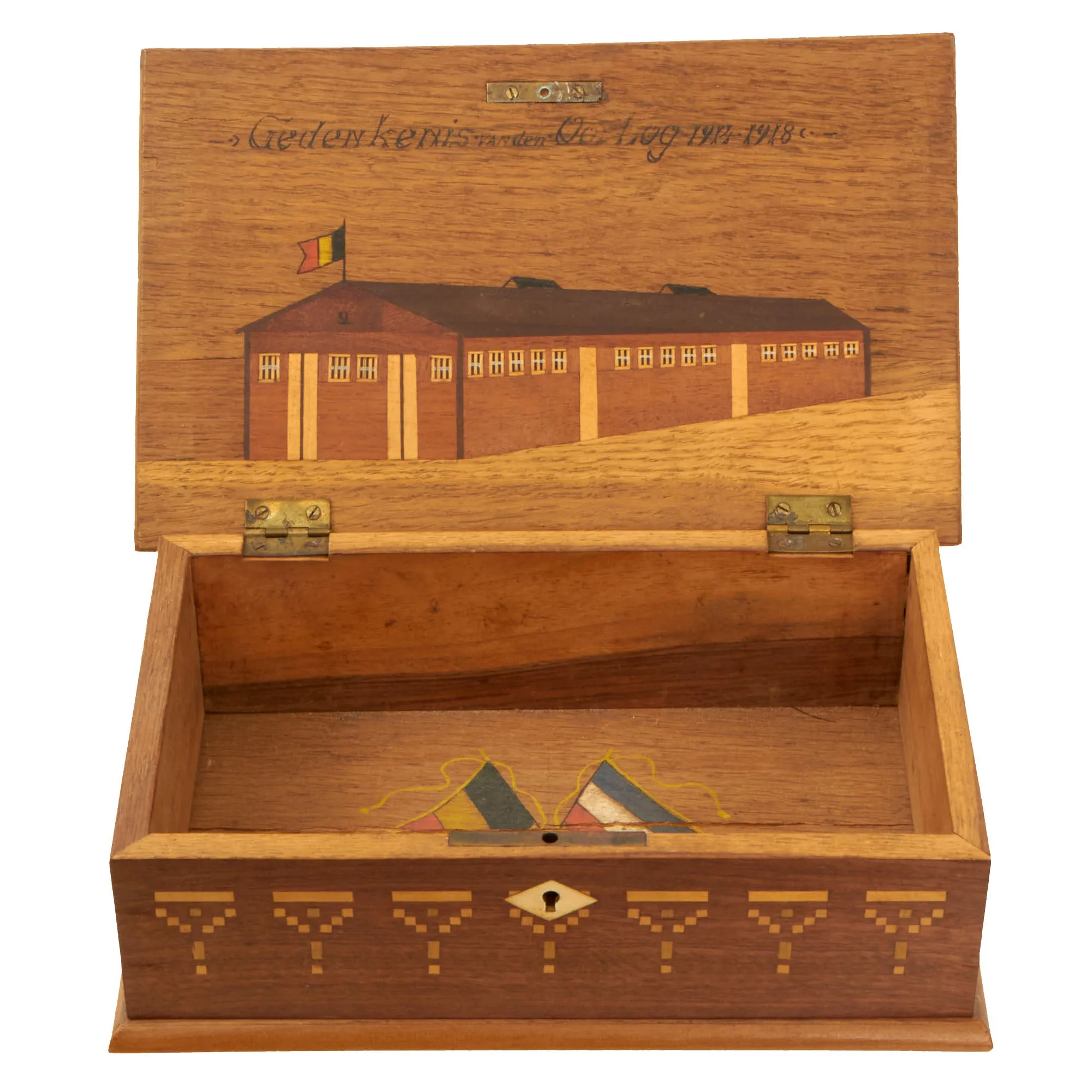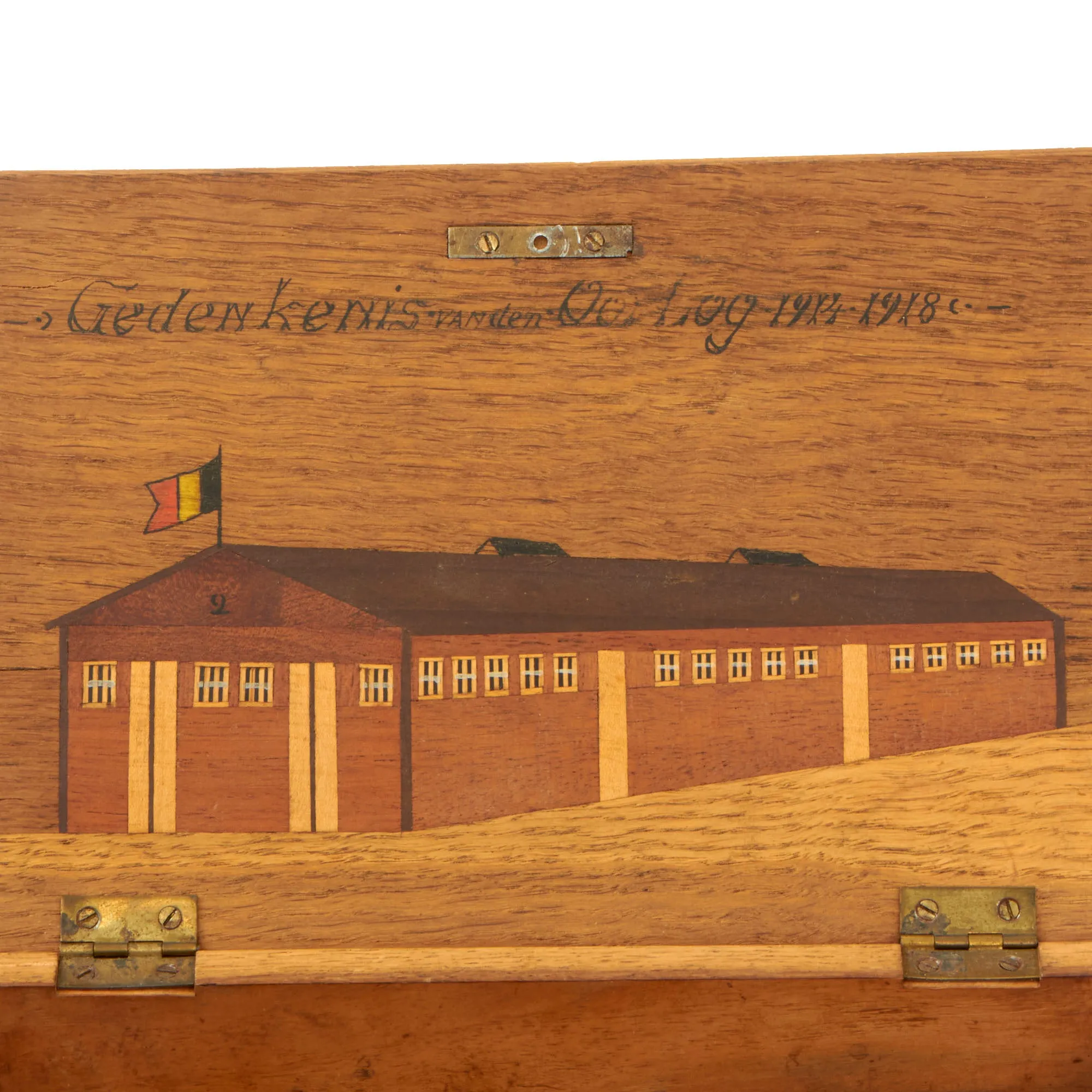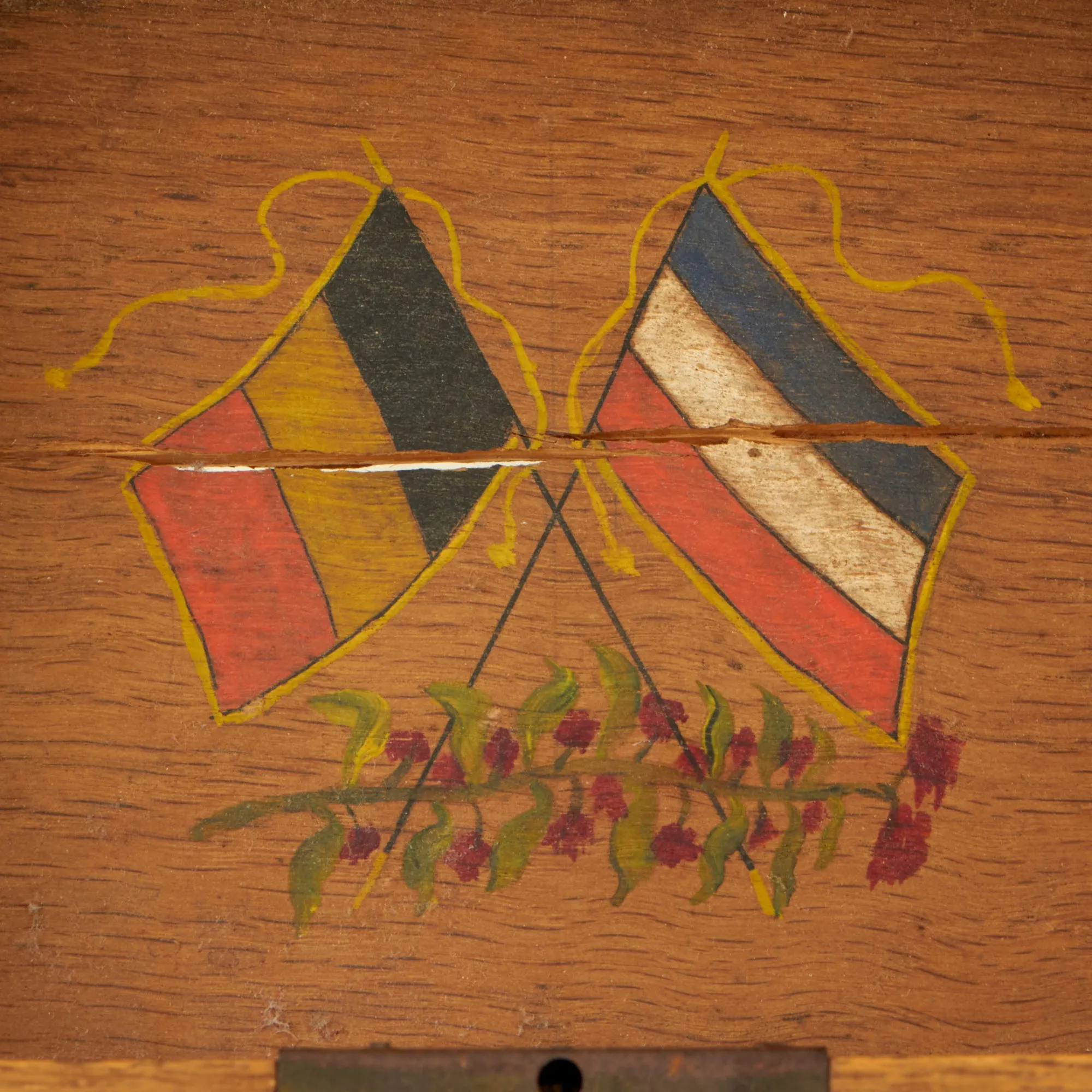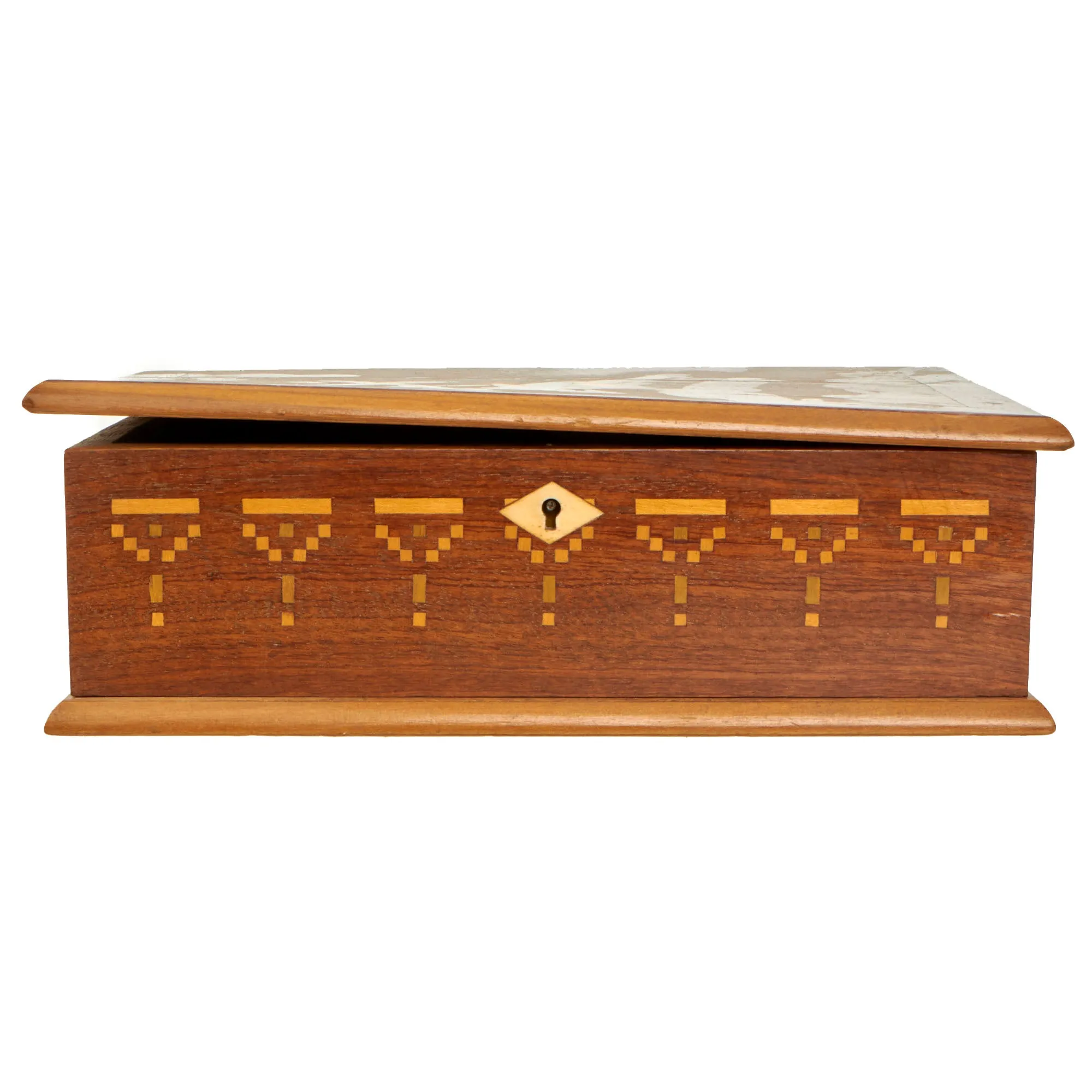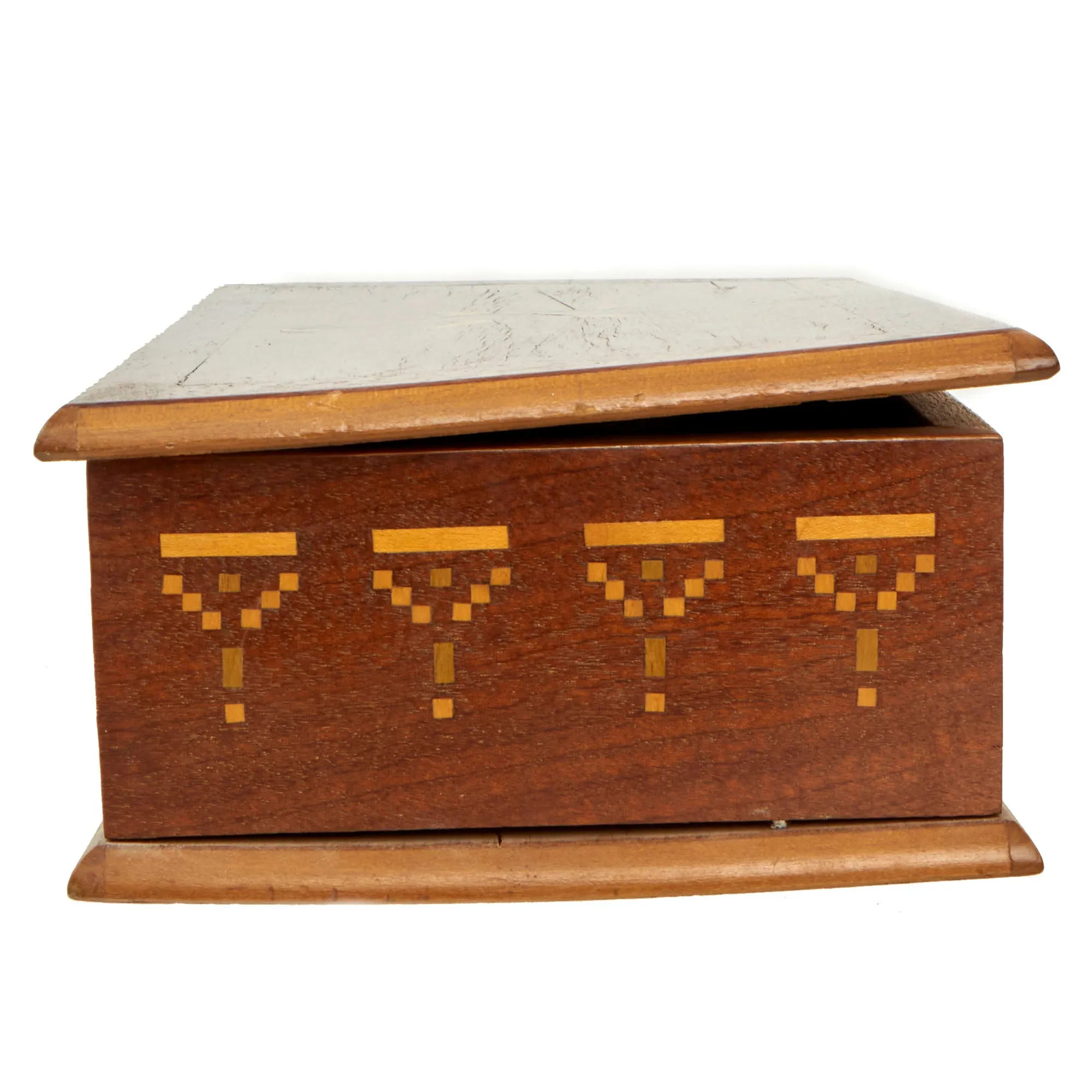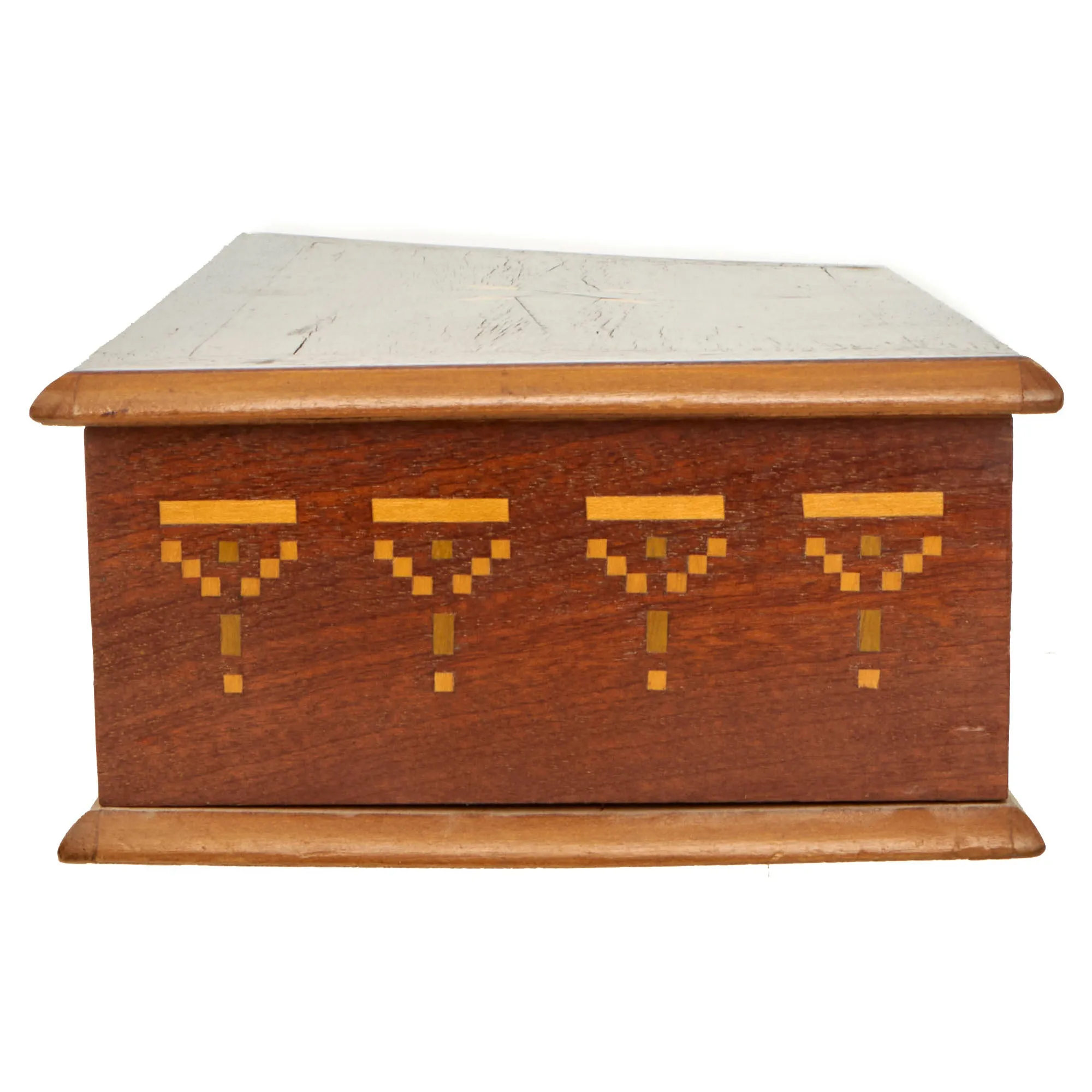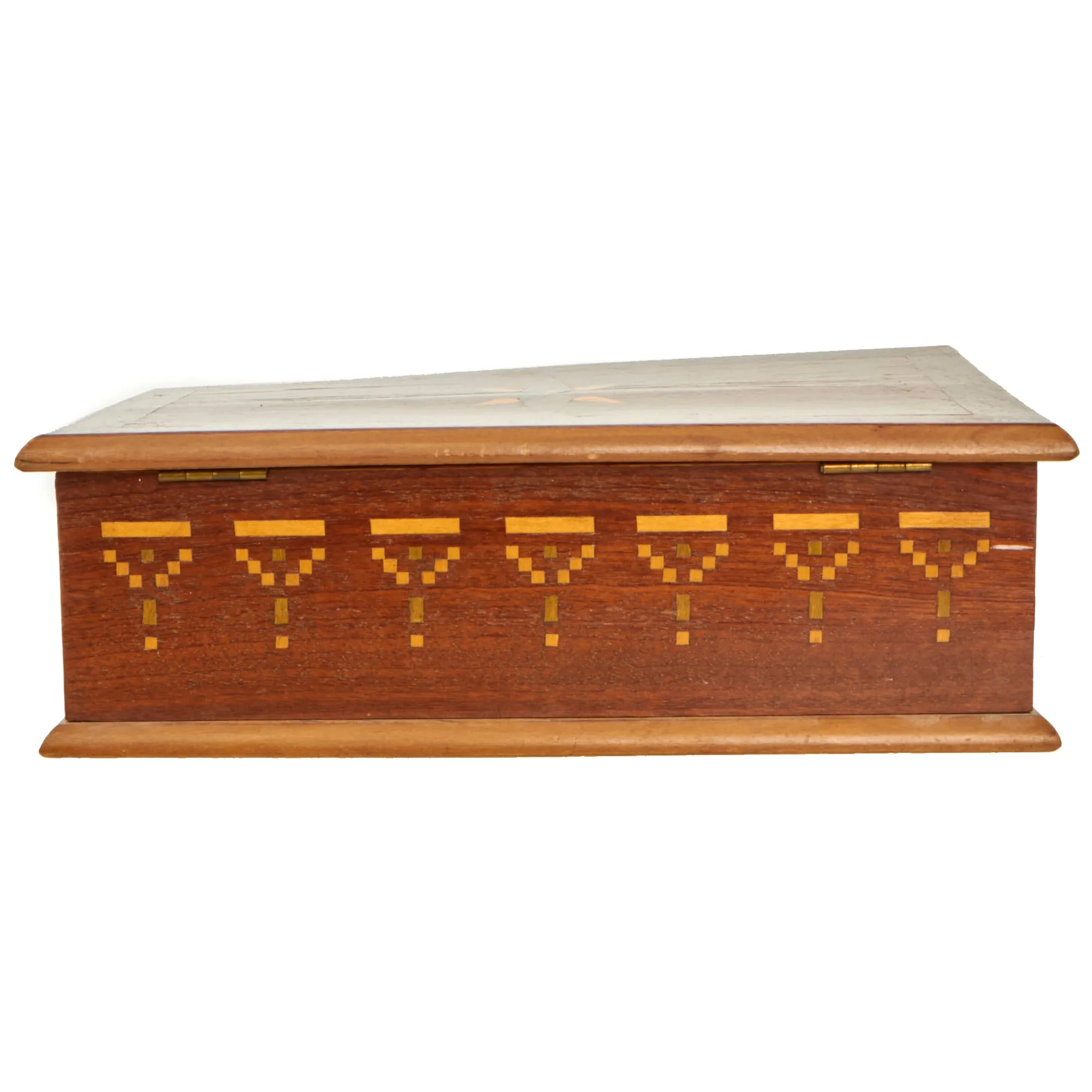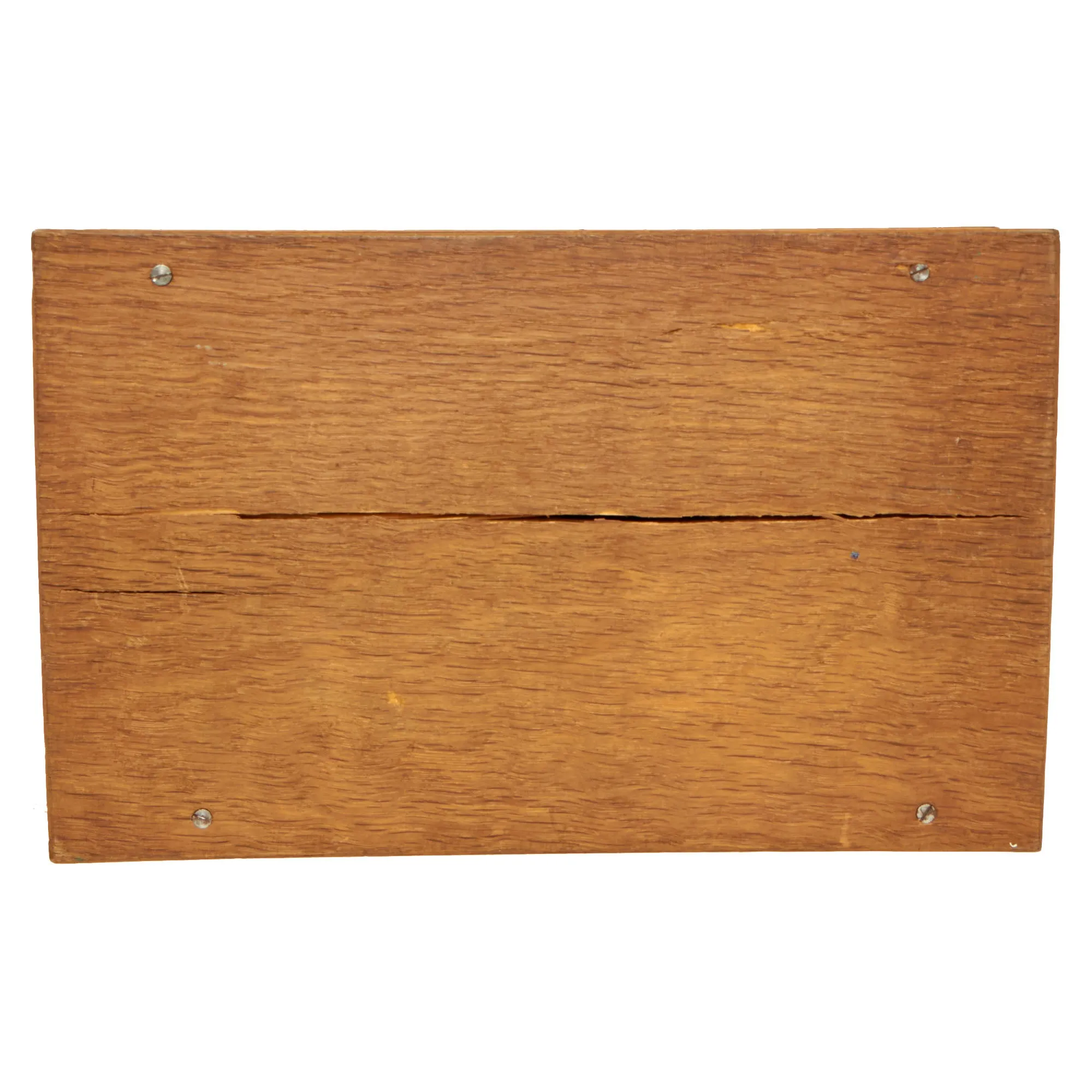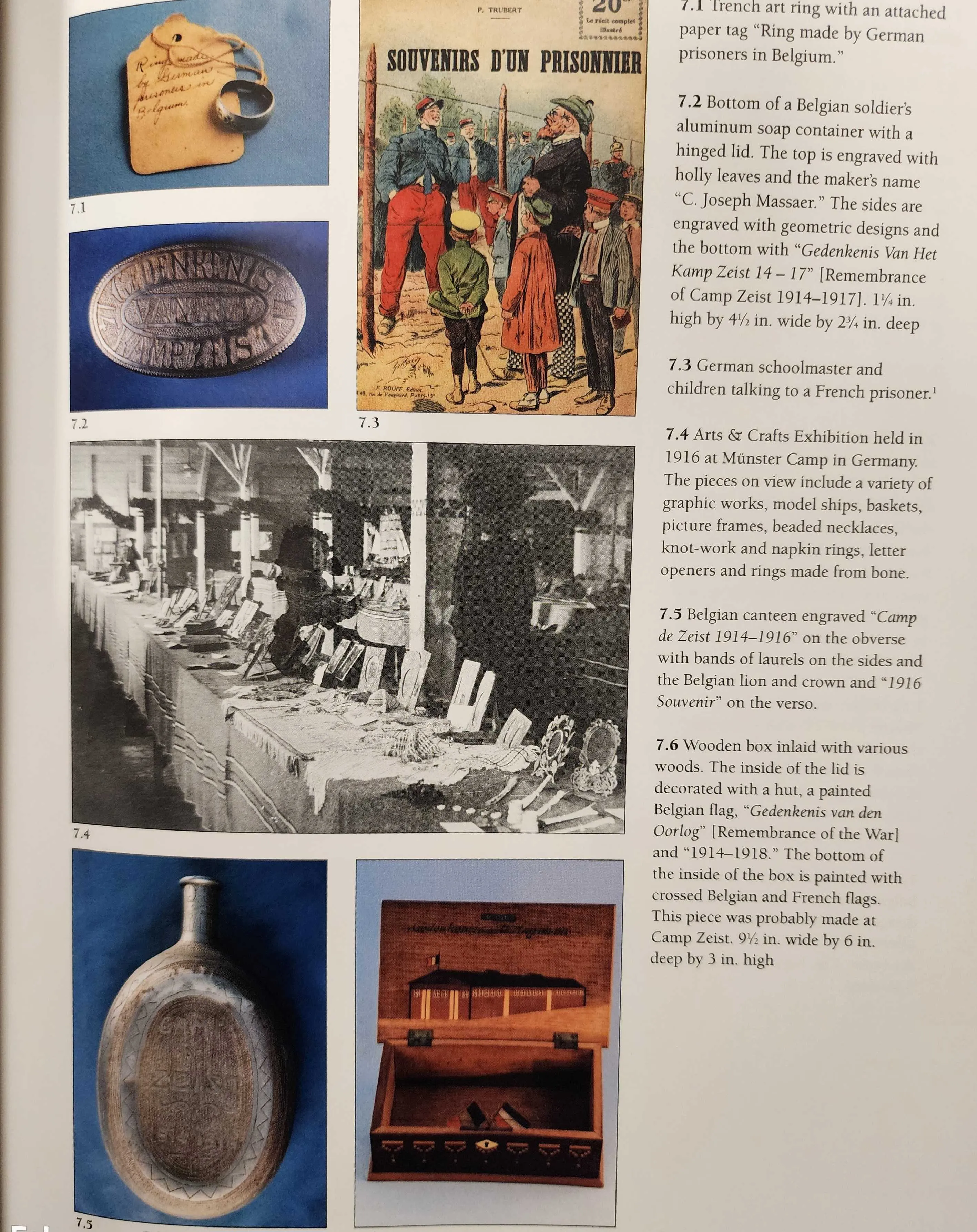Original Item: Only One Available. This is a fantastic small wooden keepsake box, most likely made or acquired by a Belgian soldier seeking safety during the German Occupation of Belgium during WWI. The box shows a military style barracks on the lid with a Belgian flag. The underside of the lid has writing that reads as “Gedenkenis is van den oorlog 1914 - 1918” (Remembrance of the War 1914-1918).
The box itself is in wonderful condition and even retains both hinges and locking hardware which is unfortunately without a key. The colors are still pleasing to the eye and the wood is still mostly solid but does have areas of open grain, cracking and splitting.
A lovely memento ready for further research and display.
During the First World War between 1914 and 1918, approximately one million Belgians fled across the border to the Netherlands. These refugees were both civilians who were afraid of the war and the alleged atrocities of the Germans, and soldiers who either deserted or were cut off from their army unit.
According to Hague Convention of 1907, as a neutral land in a time of war the Netherlands was obliged to disarm and intern all military personnel fleeing across its borders.
The first soldiers were accommodated in an empty barracks in Alkmaar. Later, barracks in Amersfoort, Groningen, Harderwijk and Oldebroek were used to intern military
personnel. The barracks in Oldebroek were given up again on 1 September 1916. In Alkmaar German soldiers were also accommodated, but because this regularly caused conflict between them and the Belgian soldiers they were moved to Kamp (Bergen) (in Dutch). To avoid being interned some military personnel attempted to flee to the United Kingdom in civilian clothes.
At Groningen, 1,500 members of the Royal Naval Division were held in the camp they dubbed HMS Timbertown, a name inspired by the wooden huts where they were quartered. The Dutch named it as "The English Camp" ("Het Engelse Kamp").
Because most barracks were too small to cope with the stream of military refugees, tent camps were swiftly erected nearby. Close to Amersfoort, Camp Zeist was constructed from wooden barracks on the orders of minister of war Nicolaas Bosboom. Officially the camp was called Internment Camp Amersfoort - Military Camp at Zeist. In 1916 the interred military personnel began the construction of a monument to show their appreciation of the hospitality received. The camp later went on to be used as the site of the Scottish Court in the Netherlands used to try those suspected of the bombing of Pan Am Flight 103 over Lockerbie, Scotland, on 21 December 1988.

 Cart(
Cart(